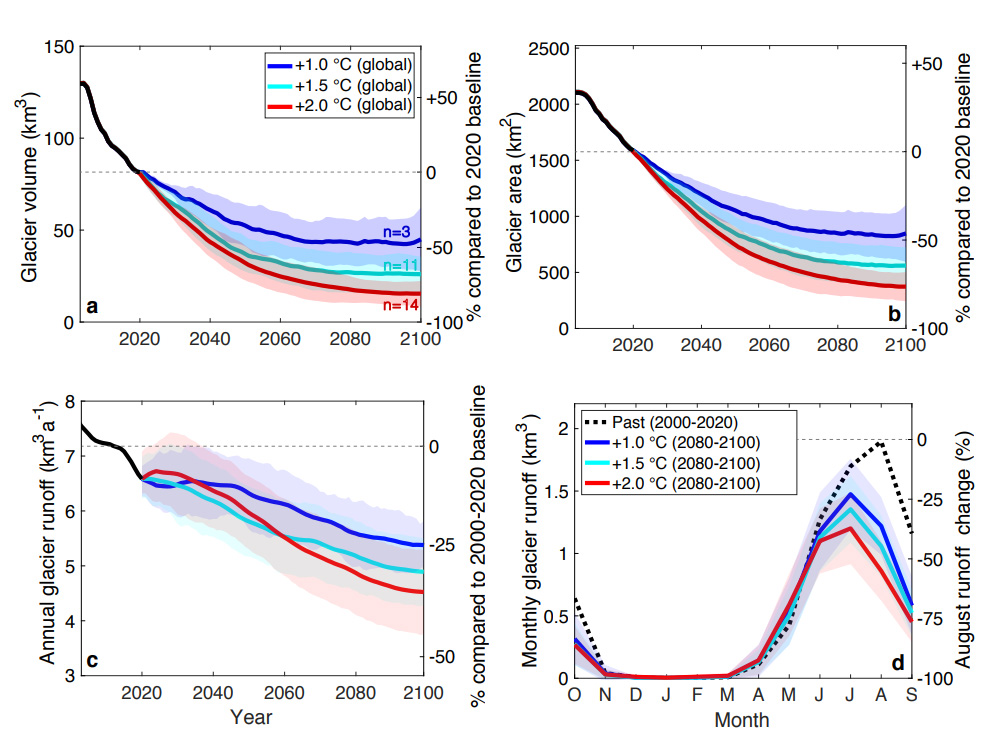0.5 degrees Celcius: Small difference, large effect
For glaciers in the European Alps, it makes a large difference whether the earth's atmosphere will warm by one, one and a half or two degrees Celsius by the end of the century. This is the finding of a new study from the Professorship of Glaciology at D-BAUG, which simulated the effects of the three climate scenarios on the nearly 4,000 glaciers in the European Alps.
Half a degree may not sound like much. But as glaciologists from D-BAUG demonstrate, every half-degree counts when it comes to global climate. For their study, the scientists combined different simulation models to calculate how the mass of Alpine glaciers would change over time – assuming one, one and a half, and two degrees global warming. According to their projections, today’s ice volume would decrease by 44% (+1.0°C), 68% (+1.5°C) and 81% (+ 2.0°C) until the year 2100. This means that glaciers such as the “Grosse Aletschgletscher” or the “Rhonegletscher” would lose about half of their todays volume even in the most moderate scenario (+1.0°C).
Furthermore, the study shows that these developments would also have a strong impact on the hydrological conditions in the Alps. Compared to the past 20 years, the annual average runoff from presently glacierized surfaces could decrease by about 25% (+1.0°C), 32% (+1.5°C) and 36% (+2.0°C) by the end of the century. In summer, glacier runoff could even decrease by up to 55% – with important implications for downstream water resources.

Reference
Loris Compagno, Sarah Eggs, Matthias Huss, Harry Zekollari, and Daniel Farinotti, Download Brief communication: Do 1.0◦C, 1.5◦C, or 2.0◦C matter for the future evolution of Alpine glaciers? The Cryosphere (2021), doi: 10.5194/tc-15-2593-2021
Learn more about the Glaciology group of Prof. Dr. Daniel Farinotti